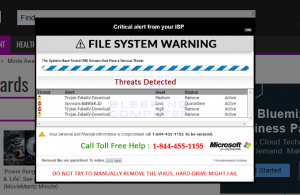A new update is coming to Google Chrome for blocking annoying ads
Chrome 71 will remove behaviors/interactions that are on the Internet sites that disturb the user.
Since December 2018, Google has announced that Chrome 71 will remove all disturbing behaviour. An ad-blocking feature was added to Chrome with Chrome 64, but we can’t say it’s very effective. Google aims to provide users with the highest level of Internet experience in this sense with Chrome 71.

From December 4, Chrome 71 will block interactions/ads that appear on sites repeatedly and disturb users. The Site owners will enter Google’s offensive content reporting page and then, they will be able to see how many acts/interactions on their websites have not been requested by Google.

This screen shows the website owner, the disturbing behaviors found on the site, and what these behaviors are. If the site owner does not remove any disturbing interactions/behaviors within 30 days, Chrome 71 will remove the ads from the website.
Google does not want – depending on the situation, there may be an interaction/behaviour within the site- deceptive content, referring to a site that has no relevance to its content, installing malicious software or other unwanted programs, phishing or ads that open unwanted pop-ups.
Site behaviors classified as disturbing by Google are as follows;
Fake content, system warnings, or warnings
Ads that redirect to another link when clicked, in-site misleading designs, messaging applications, and system alerts.

Misleading behavior of the user
The play keys, forward buttons, scroll bars that appears to be true on the right side of the page but that redirect to a different link when clicked.
Phishing
Intrasite behaviors, interactions, and advertisements to steal user information.
Behaviors that lead to another connection without the user’s request
Intra-site behaviors that redirect the user to another page even though they do nothing.
Fake Mouse Cursor
A fake mouse cursor that appears on the user’s screen and pushes the user to click somewhere.
Hidden ads in the background
Ads that pop up in a new tab when the user clicks on an ordinary location.

Adverts that transmit malware
Advertisements that transmit a program or virus to the user’s device that the user does not want when the user clicks it.
Missing or misleading brand ads
Ads that promote non-real businesses. Brand, logo, ads that are missing the company name even if they have an explanation.
Chrome 71 will automatically block annoying behavior from Internet sites, but Google provides users with the opportunity to control this point. Users who want to stop blocking ads/behaviors or only prevent certain behaviors from being blocked.
We highly appreciate this feature of Chrome. On December 4, when the annoying behavior prevention feature starts to apply with Chrome 71, we’ll see how effective Google will be with this attack.

No Comments!